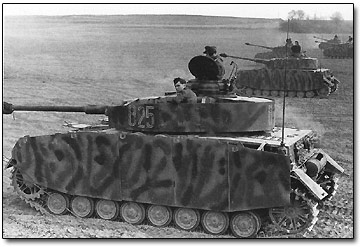World War II Eastern Front
Closing "Land Bridge" Between Dvina and Dnieper
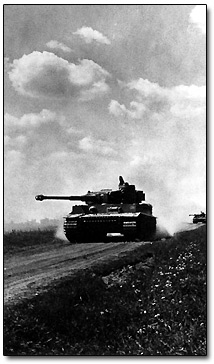
German Panzers
Near Smolensk
Army Group Center comprised two Panzer groups (2nd and 3rd), which rolled east from either side of Brest-Litovsk and converged ahead of Minsk, followed by 2nd, 4th and 9th Armies.
The combined Panzer force reached the Beresina River in just six days, 650 km (400 miles) from their start lines.
The next objective was to cross the Dnieper river, which was accomplished by 11 July. Following that, their next target was Smolensk, which fell on 16 July, but the engagement in the Smolensk area blocked the German advance until mid-September, effectively disrupting the blitzkrieg.
Army Group South, with 1st Panzer Group, 6th, 11th and 17th Armies, was tasked with advancing through Galicia and into Ukraine.
Their progress, however, was rather slow, with only the corridor towards Kiev, capital of Ukraine, secure by mid-July. 11th Army, aided by two Romanian armies, fought its way through Bessarabia towards Odessa - Ukrainian city on the Black Sea shore.
The 1st Panzer Group turned away from Kiev for the moment, advancing into the Dnieper river bend. When it joined up with the southern elements of Army Group South at Uman, the group captured 100,000 Soviet prisoners in a huge pocket.
Those Russian soldiers who escaped German captivity joined the partisan formations hiding in the deep woods. These militarized groups consisted mainly of civilians who got trapped behind the advancing German forces. As the Wehrmacht's invasion progressed, the partisan-held areas were swelling behind German lines.
Russian Guerrilla Fighters
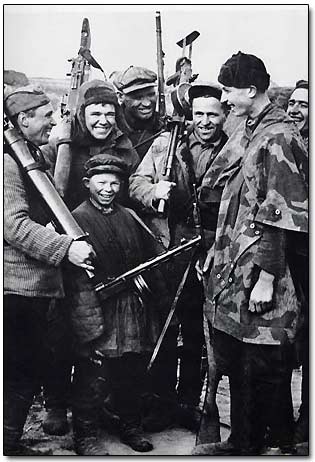
As the Red Army withdrew behind the Dnieper and Dvina rivers, the Soviet hierarchy turned its attention to moving as much of the region's heavy industry as it could, dismantled and packed onto railroad flatcars, away from the front line, reestablishing it in more remote areas in the Urals, Siberia and in Central Asia.
Tank Plant in the City of Chelyabinsk, the Ural Mountains
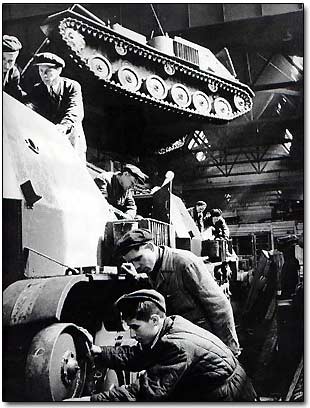
Most civilians could not be evacuated along with the equipment and were left behind to the mercy of the invading fascist forces. Thus, left with no choice, the civilian population armed itself and joined the fast-growing partisan movement feared by German soldiers.
Russian Partisans
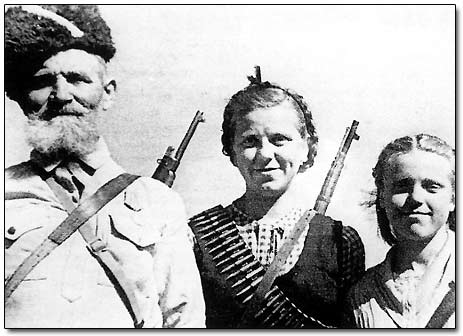
With the capture of Smolensk and the advance to the Luga river, Army Groups Center and North had completed their first major objective: to get across and hold the "land bridge" between Dvina and Dnieper. The route to Moscow, now only 400 km (250 miles) away, was wide open.
The German generals argued for an immediate drive towards Moscow, but Hitler overruled them, citing the importance of Ukrainian grain and heavy industry if under German possession. The order was issued to 2nd Panzer Group to turn south and advance towards Kiev which fell on 19 September.
German 2nd Panzer Army Group in Ukraine
